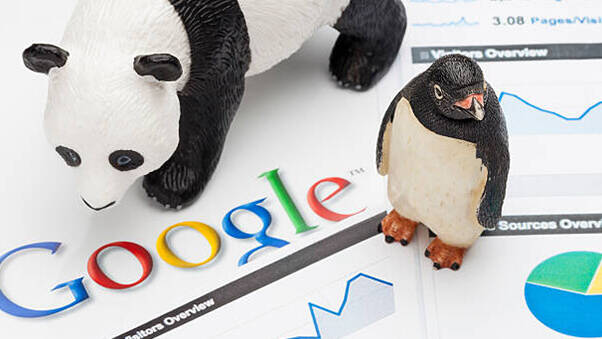Brand stories convey feelings and emotional experiences. This makes them both educational and entertaining, and captivating in a broad number of ways. When it comes to acquiring B2B consumers in Thailand, these two features might also be beneficial to any Marketing team, regardless of their level of advancement, language competency or skill. We can use storytelling to pique the interest of those involved in the decision-making process in a product or service. Storytelling is the art of encapsulating information in a narrative.
The primary goal of B2B storytelling in particular is to elicit subliminal interest in a product or brand and, ideally, to result in conversions. It frequently accomplishes this by combining somewhat dry product data and figures with true (or fictional, if used suitably) anecdotes and origin tales. The goal is to generate the same feel as entertaining films, writing, and other things that are easy to consume and capture the attention of professionals and/or customers. This is why it becomes increasingly crucial as the product or service becomes more sophisticated. We need to cut through lethargy.

Give Your Business Its Own Unique Personality
Why is storytelling so important?
Storytelling is most effective when it cleverly combines entertaining and facts. As a result, it’s also appropriate for B2B content marketing. In B2C marketing, there is nearly always a storytelling element to consumer comms.
Logical considerations play a more significant influence in B2B transactions. This long-held (and widely held) belief may not always mirror reality. Today, we know that emotions play a big role in business decisions, even if the recipient isn’t necessarily aware of it. The reason for this is that they are also “only” people who believe their gut instincts as much as statistics and facts. This can be positively influenced by effective B2B storytelling.
Storytelling is also vital for sticking out from the crowd. The net is a noisy space, and ditto for your social feeds. his is due to the fact that numerous players have comparable basic numbers and pricing, and therefore require some more creative cut-through. Storytelling allows you to set yourself out from the competition and give your business its own unique personality.
What is the secret to good storytelling?
The ingredients – like baking a great cake with a heart-warming origin story with its own lore – are derived from the preferences of the target information consumer. Yet, in the correct form and balance, and when delivered to an exceptional quality, we can be sure that there are several common components that contribute to its success:
• A story must have a central character with whom the reader can identify.
• This means it must be appropriate for the target audience, such as in terms of age.
• Young decision-makers are undoubtedly more receptive to the adventures of a family with young children than a CEO in his or her sixties, for example.
• He or she is most likely more interested in good food or expensive travel experiences.
• There must be some sort of challenge for the hero to overcome. In screenwriting, this is encapsulated in the goal setting of, “My story is about a XX who wants to XX.”
Your imagination has no bounds, so go nuts. This is nearly always a better approach than having no backstory at all and just a range of products to sell.
However, the manner in which information is provided must be consistent with the product or service and be authentic. Slapstick storytelling isn’t acceptable for a solemn funeral home, and it’s more likely to agitate the audience than to persuade them. With all due respect to original content, storytelling cannot be divorced from its subject, too. Each tale should, in some way, connect to the brand’s core and the major topic – and therefore ultimately sell your product.
The appropriate moment to publish is also important. As a result, B2B storytelling should always be a component of a larger marketing plan, and should be timely and topical (Public Relations is an enormous help here, especially). With the use of digital storytelling, B2B companies can breathe fresh life into their material.
Given the high level of consumer participation in the industry, as well as the consumer research that many companies have conducted, there are several chances for B2B organisations to use digital storytelling. Companies must, however, get creative with their digital storytelling in order to develop content that stands out and engages people.
Overview of PR storytelling:
Formats empathy x authenticity
1. Empathy – Companies must first modify the way they think about and develop content in order to fully embrace and reap the benefits of digital storytelling. Empathy is the most critical aspect of this shift because when a firm takes the time to understand its customers, it can produce “tales” that are more emotionally memorable. These types of stories make customers feel more connected to a company on a deeper level than just a transactional level. They can even make them part of your story, which is a massive help to any firm looking to build a social media following or community.
It’s critical to develop tangible deliverables in a digital storytelling strategy, whether a firm is aiming to explain its brand story or construct a promotional narrative. That implies businesses should have a strategy in place for telling their narrative effectively, taking into consideration thought leadership, market trends, and the target audience.
2. Authenticity – Due to the digital change over the last several years, and more so since the pandemic began, marketing methods that were previously only used by organisations in the B2C industry have begun to become prevalent among companies in the B2B industry as well. We can say that this is very true from the perspective of us at Gemini, as Bangkok’s leading PR specialist.
Many of those marketing innovations will remain in place in the B2B industry even after the epidemic is over and the world returns to normal, with the usage of digital storytelling being the most significant change.
When using digital storytelling tactics, businesses have a lot of flexibility. Companies can use digital storytelling to overcome a multitude of barriers between brands and customers, resulting in more meaningful and impactful relationships with the target audience. Companies can humanise themselves in the perspective of customers by telling true tales that they believe in.
Digital storytelling, when done right, may help B2B organisations build trust, add a new perspective to a brand’s story, and include other industry thought leaders in their marketing efforts.
Consumer solutions
There’s no need for storytelling to be limited to a single digital format, as businesses now have numerous options for presenting and sharing their tales across multiple platforms. One of the most appealing aspects of digital storytelling is that a company’s story may take several shapes while still connecting with the target audience. A well-crafted tale can be used in a variety of promotional channels and platforms, such as blogs, social media platforms, video content, podcasts, email, and more.
Better PR Is Ready For You. Are You?
Publish Your Stories on 250+ News & Social Channels
Download Excel File (.xls)
310 client reviews (4.8/5)
You might be also interested in this ...
January 23, 2023
How Does Press Release Help Improve Your Google Ranking?
July 19, 2022
Top 20 Newspapers in Thailand
July 19, 2022


